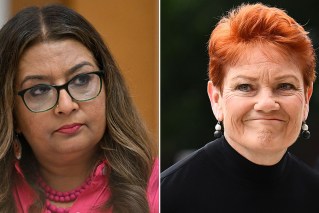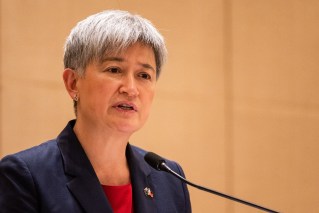Can a ‘bold’ plan to send millions more Aussies to university work?

Millions more Australians will study at university as part of a “bold, long-term” vision to put higher education within reach of people from diverse and disadvantaged backgrounds.
Making universities more equal places has been a long-held goal but has eluded successive Australian governments.
On Wednesday, Education Minister Jason Clare conceded that achieving it would entail politically difficult reform – not just of universities but the broader national education system.
He said Australia now had no choice but to close its persistent education gap.
Six million short
Australia’s economy will need six million more university graduates in the decade leading up to 2052, a draft report from an expert-led universities accord launched by the minister warns.
Tertiary qualifications will be needed for more than half of all new jobs in coming decades driven by growing need for workers in health care, technology and the professions.
“Almost every new job that’s created in the years ahead will require a TAFE qualification or a university degree,” Mr Clare said.
“The only way to really do this is to significantly increase the number of university students from the outer suburbs and the regions. Students from poor backgrounds. Students with a disability. Indigenous students.”
One in two Australians in their 30s living in capital cities has a university degree.
Among poor families, that falls to 15 per cent.
Despite previous government spending of more than $1.5 billion over a decade, the number of students from disadvantaged backgrounds studying at tertiary institutions remains stubbornly low.
Lifting it will need to start by making changes from preschool said Mr Clare, who has commissioned separate reviews into all three tiers of the education system.
“How (early education, schools and universities) knit together has the potential to change the lives of people who aren’t even born yet,” he said.
But educational inequalities, Mr Clare said, have only become worse recently: The reading skills of eight-year-olds from poor families are now two years below those from wealthy families, a gap that has doubled in only 15 years.
Making universities fairer
The government will immediately spend $65 million on a recommendation to build dozens of study hubs for students in suburban and regional areas.
It will also abolish a Morrison government change that took away university funding from students who failed more than 50 per cent of their classes.
The requirement disproportionately hurts poorer students who juggle work and study, said Sarah O’Shea, an expert on diversity in education at Charles Sturt University.
“They’ve already estimated that about 13,000 students have withdrawn because of that (fail rate policy),” she said. “Those students do learn from failing.
“It’s far better to support (them).”
Over 70 ideas for making universities fairer were floated in Wednesday’s interim expert review.
They ranged from creating a new national, regional university or moving to a needs-based funding model for the most underrepresented students.
Professor O’Shea said opening the door to university would require many far-reaching changes, including addressing student poverty.
Last financial year, about 120,000 Australians wanted to but did not enrol at university because of financial difficulties, according to government statistics.
One-in-seven students go without food or other essentials; she hopes a review of the financial support for students will be included in the accord’s final report.
Professor O’Shea said that getting students from diverse backgrounds into university starts with new structures: Beginning with better teaching methods for disadvantaged school students to help finding jobs after graduation.
Academic working conditions
The National Tertiary Education Union says that keeping students at universities will require more support for undergraduates’ lecturers, between 50 to 80 per cent of whom are employed on a casual or contract basis.
It has uncovered over $80 million in back pay owed to staff employed on those terms at universities nationwide.
The union’s president, Alison Barnes, said lecturers on precarious or short-term contracts could not provide the same quality of education as those in secure positions.
“If people are employed insecurely, it undermines some of the core functions of our university, such as academic freedom,” she said.
“Insecure work is toxic for the individual, but it can be corrosive to universities too.”
The union welcomed Mr Clare’s pledge to work with state and territory governments to change how universities are run: To put more academics on their boards so they can focus on issues like staffing and culture.
Renee Carr, the executive director of Fair Agenda, welcomed proposed changes allowing the Ombudsman to respond to complaints about the safety of local and international students.
More than 14,000 students a year are victims of sexual assault, a recent survey from that group found.
These and many other “spiky” ideas for education reform, from declining graduation rates in state high schools to an election promise to address a widening shortfall in public school funding, are all on the table, the Minister said.
It’s a long list he says will build consensus for a final reform plan across the next decade or beyond.
That begins, the minister said, with a long overdue debate about education and priorities,
“Most of those children never catch up,” he said. “The reverse happens: The gap gets bigger and bigger with every year at school.”








